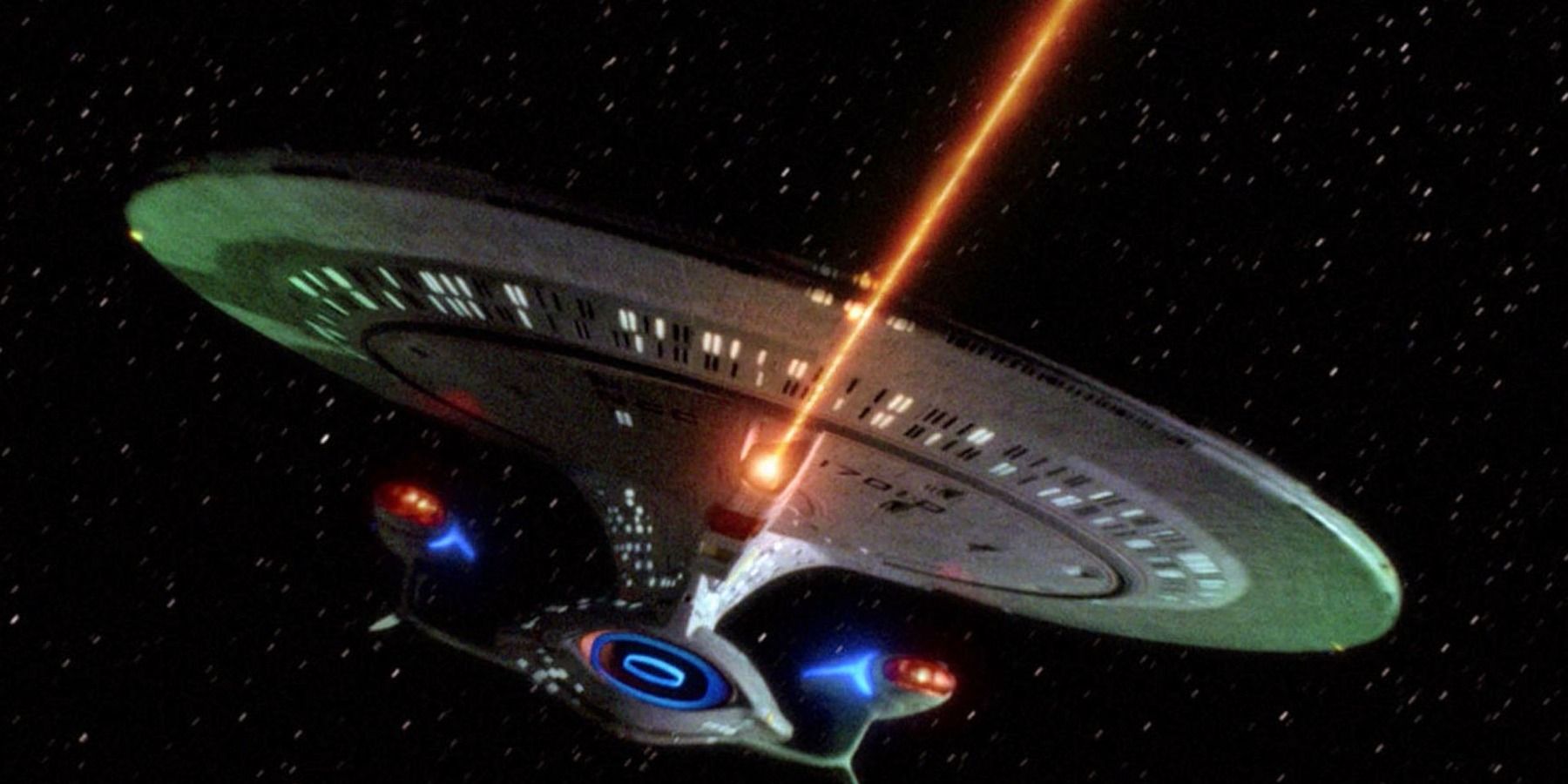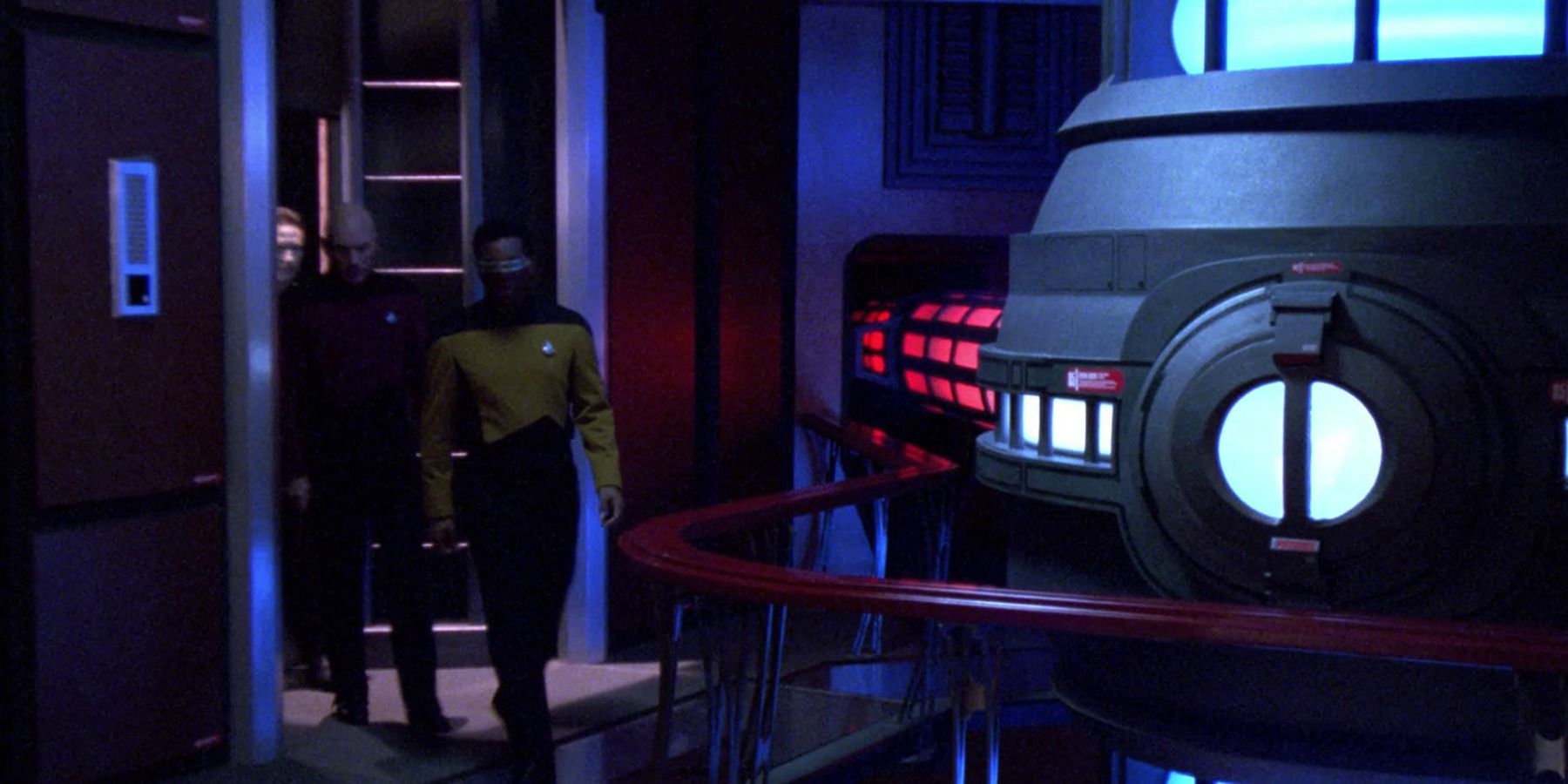Highlights
- The "Cost of Living" episode of Star Trek: The Next Generation highlighted the vulnerability of starships and their reliance on critical elements like nitrium.
- Nitrium is a versatile metallic element used in the construction of Federation starships, particularly in life support systems, computers, and engines.
- The episode showcased a unique blend of personal narratives and the unexpected threat of the nitrium parasite, reminding viewers of the unpredictable challenges faced by the crew of the USS Enterprise-D.
In the "Cost of Living" episode of the fifth season of Star Trek: The Next Generation, the Federation starship Enterprise-D became a battleground for a nearly undetectable, yet immensely destructive, parasite. The primary focus of the episode revolved around personal narratives and character development. However, the infiltration of the nitrium parasite introduced an unforeseen element of peril to the well-being of the Enterprise and its crew.
What seemed to be a side story became a pivotal demonstration of the vulnerability of starships and their reliance on critical elements like nitrium. As episode writer Peter Allan Fields emphasized, sometimes the personal narratives take precedence, even in the ever-expanding universe of Star Trek.

Star Trek: Why TNG Improved So Much After Season 1
What factors nearly stopped The Next Generation from concreting itself as one of the best Star Trek shows to date?
What is Nitrium?
Nitrium is a metallic element or alloy integral to the construction of Federation starships, and plays a crucial role in the function of these vessels. It could be found in various sources, including asteroids like those in the Pelloris Field. This versatile element was a fundamental component in numerous ship systems. Most importantly, it is used in Galaxy-class starships' life support systems, computers, and engines. Additionally, nitrium was abundant in dilithium chambers. These critical components of a starship's warp core housed the dilithium crystals essential for space travel.
The dilithium chambers, including dilithium regulators and antiproton injection seals, formed the heart of the warp core. It was within this chamber that the dilithium matrix provided the energy necessary for faster-than-light travel. The design of the dilithium crystal chamber for the USS Enterprise-D was a testament to the Federation's dedication to exploration and diplomacy, showcasing the engineering marvels of Outpost Seran T-1.
However, the presence of nitrium in these essential areas also created a vulnerability for starships. This substance was precisely what the nitrium parasites fed on, threatening to cripple the vessel. This perilous scenario became a reality during the events of "Cost of Living."
What Happened in 'Cost of Living'?
Title | Star Trek: The Next Generation, "Cost of Living" |
|---|---|
Episode no. | Season 5, Episode 20 |
Director | Winrich Kolbe |
Writer | Peter Allan Fields |
Original air date | April 20, 1992 |
The central focus of "Cost of Living" was the unlikely mentorship between Lwaxana Troi and Worf's young son, Alexander. Lwaxana encouraged Alexander to embrace her carefree lifestyle, while journeying to meet a man she had blindly agreed to marry. Amidst these interpersonal dynamics, an unexpected threat descended upon the USS Enterprise-D, endangering the ship and its crew.
The peril began when the starship destroyed an asteroid using its navigational deflector, preventing a collision with Tessen III, near Starbase 117. Unbeknownst to the crew, this asteroid was host to a mysterious glittering dust, which infiltrated the ship. This glittering substance turned out to be parasites that were attracted to the nitrium within the ship's systems.
As the episode unfolded, the crew faced a series of mysterious malfunctions, with over 200 reports of malfunctioning replicators. Fearing the consequences of ordering dinner, Data and La Forge embarked on an investigation, which led them to detect an energy fluctuation in an access corridor. Here, they stumbled upon an odd EM pattern and a strange, gooey substance oozing from behind a panel.
The situation escalated when Picard received reports of replicator issues on the bridge. It became apparent that the data net interface, responsible for routing replicator selections, had been transformed into an unidentified gelatinous material. Suddenly, the inertial damping system failed, causing the ship to shake. Picard ordered the ship out of warp, but further system failures, including primary attitude control and helm control, left the ship in disarray.
As the crisis unfolded, the crew identified the presence of nitrium parasites on board, infesting and consuming critical systems. The dilithium crystal chamber and power transfer conduits, vital for the ship's operation, were at risk. Data, La Forge, and Picard devised a daring strategy to eliminate the parasites: they would locate the asteroid field, rich in nitrium, from which the previous asteroid originated. With Data's ability to function without oxygen, he navigated the starship to the nitrium-rich asteroid field, coaxing the parasites to relocate. Through their ingenuity, the ship's systems were restored to normal, just in time for Lwaxana Troi's upcoming wedding.
Writer Peter Allan Fields shared his perspective on the episode, acknowledging his initial concerns about the inclusion of the nitrium parasite subplot. He believed it was a narrative element imposed by necessity rather than being an intrinsic part of the show. However, he found satisfaction in prioritizing the personal stories that made Star Trek so compelling:
We don't want to do them all like that. This is a science-fiction show, and the science is fun, but in this case, it was the personal story that was most important.
In "Cost of Living," fans witnessed a unique episode of Star Trek that blended personal growth and character development with the unexpected threat of the nitrium parasite. Despite its brief appearance, the menace served as a reminder of the unpredictable challenges the crew of the USS Enterprise-D faced during their exploratory voyages. This hidden danger demonstrated the show's ability to balance science fiction intrigue with the development of beloved characters, making it a memorable addition to the Star Trek legacy.





